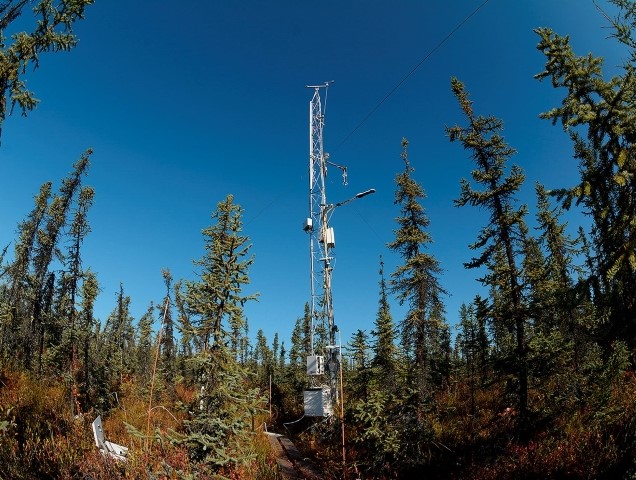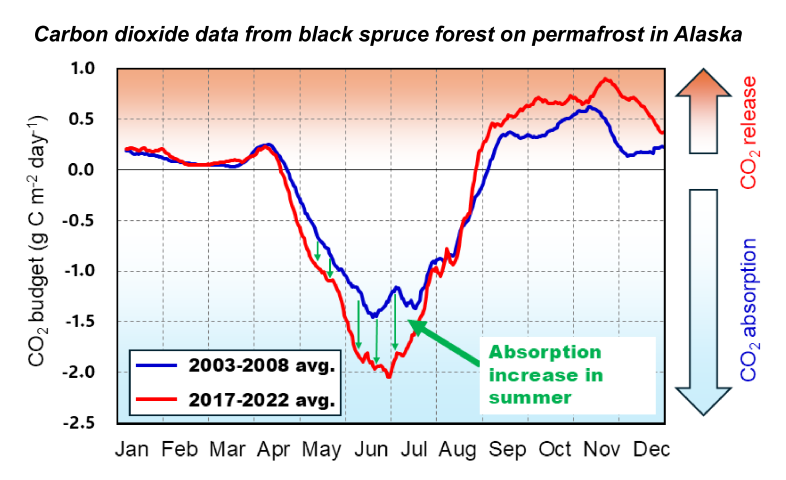Research News
Oct 31, 2024
- Agriculture
Landmark 20-year study of climate change impact on permafrost forests
Data could help rethink climate change models regarding sources of carbon and CO2 sinks
Micrometeorological observation tower in Alaska
The tower installed in a black spruce forest on permafrost in Fairbanks, Alaska, monitors CO2 exchange and environmental conditions in 30-minute intervals.
Credit: Osaka Metropolitan University

Credit: Osaka Metropolitan University
In perhaps the first long-term study of CO2 fluxes in northern forests growing on permafrost, an Osaka Metropolitan University-led research team has found that climate change increased not only the sources of carbon, but also the CO2 sinks.
The 20-year observation from 2003-2022 in the interior of Alaska showed that while CO2 sinks turned into sources during the first decade, the second decade showed a nearly 20% increase in CO2 sinks.
Graduate School of Agriculture Associate Professor Masahito Ueyama and colleagues found that warming led to wetness, which in turn aided the growth of black spruce trees. During photosynthesis, the growing trees were using the increasing CO2 released from human activities.
“The 20 years of observational data that we have is, as far as we know, the longest record of such research on permafrost forests in the world,” Professor Ueyama proclaimed. “However, since it is difficult to apply the findings and data from those 20 years to a future world in which warming continues, further long-term observations are needed. But we hope that our findings will help verify and improve the accuracy of warming prediction models.”
The findings are published in the Proceedings of the National Academy of Sciences.
Funding
This study was partially supported by the Arctic Challenge for Sustainability II (ArCS II), grant number JPMXD1420318865.
Paper information
Journal: Proceedings of the National Academy of Sciences
Title: Anomalous wet summers and rising atmospheric CO2 concentrations increase the CO2 sink in a poorly drained forest on permafrost
DOI: 10.1073/pnas.2414539121
Authors: Masahito Ueyama, Hiroki Iwata, Hirohiko Nagano, Naoki Kukuu, Yoshinobu Harazono
Published: 25 October 2024
URL: https://doi.org/10.1073/pnas.2414539121
Contact
Graduate School of Agriculture
Email: mueyama[at]omu.ac.jp
*Please change [at] to @.
SDGs


